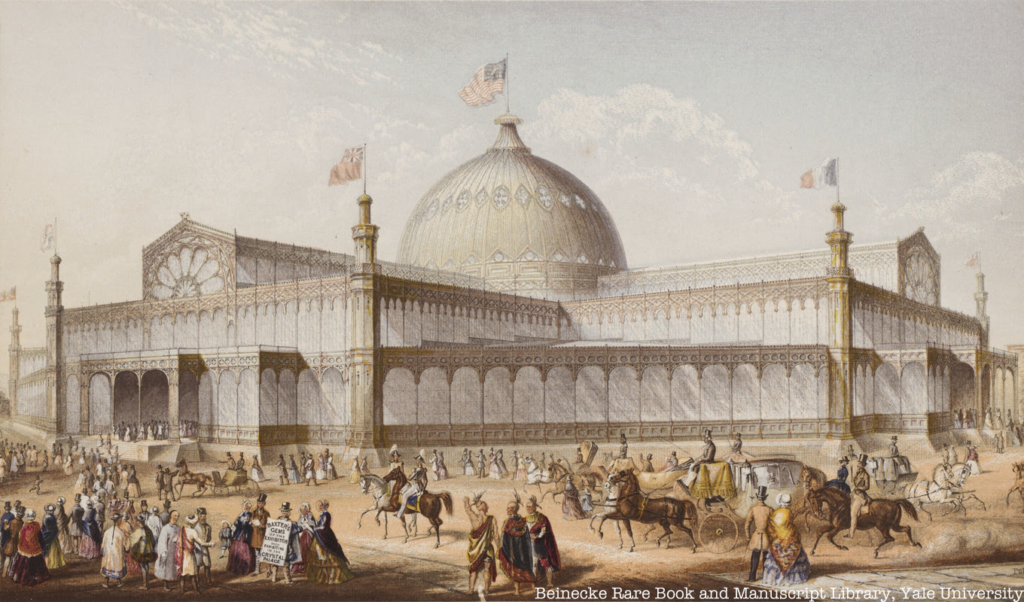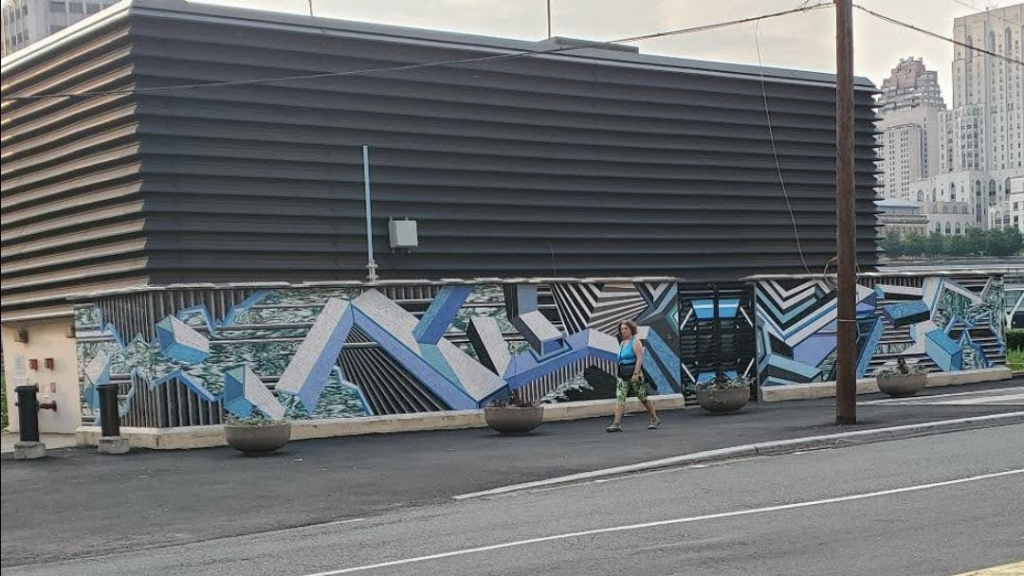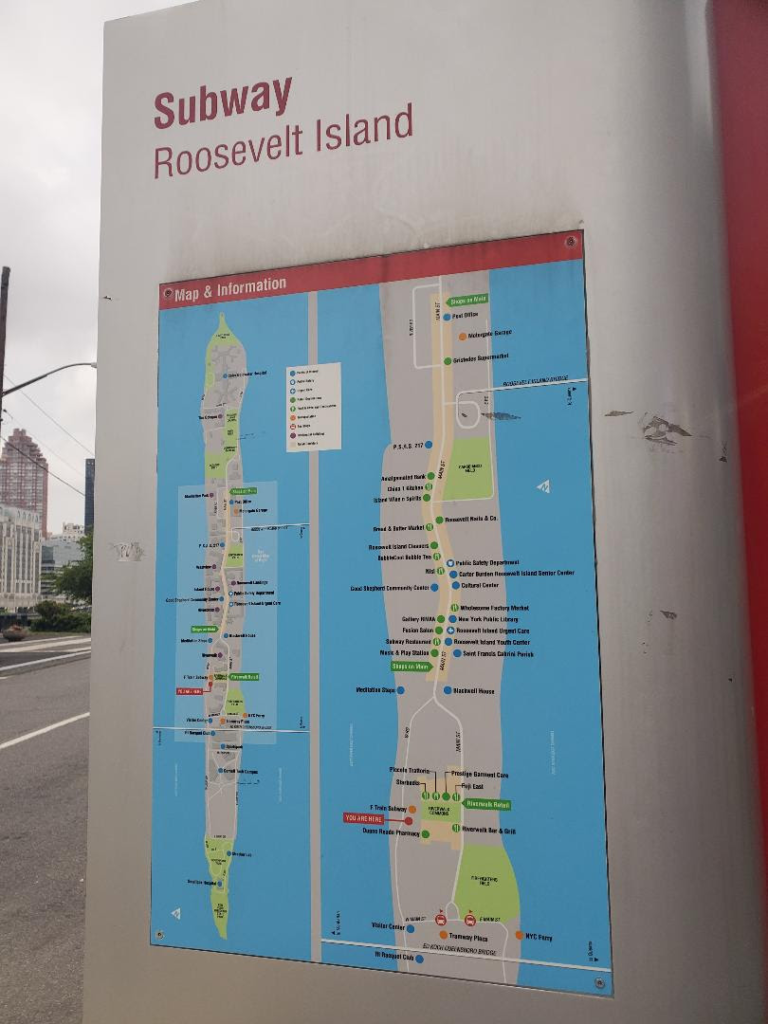Monday, July 17, 2023 – THE GRANDEST OF ALL FAIRS THAT CAPTURED NEW YORK


FROM THE ARCHIVES
MONDAY, JULY 17, 2023
ISSUE# 1036
THE LOST
CRYSTAL PALACE
OF
NYC’S FIRST WORLD’S FAIR
UNTAPPED NEW YORK
IMAGES NEW YORK PUBLIC LIBRARY

Before Flushing Meadows-Corona Park was transformed to accommodate the World’s Fairs of 1939 and 1964, America’s first World’s Fair took over Bryant Park in midtown Manhattan. The centerpiece of that fair in 1853 was the Crystal Palace, an impressive dome-topped glass structure that took up nearly an entire square block. At the time, it was the largest building in the western hemisphere. Deemed “The Finest Building in America,” the Crystal Palace made New York City a must-visit travel destination, but it was sadly short-lived. To celebrate the 170th anniversary of the Palace’s opening, we’re sharing a talk from our Untapped New York Insiders On-Demand archive where Justin Rivers, our Chief Experience Officer, talks about the history of this lost building!
The Crystal Palace was designed by architects Georg J. B. Carstensen and Charles Gildermeister. It was built to house the Exhibition of Industry of All Nations, a global exhibition that is largely considered America’s first World’s Fair. The design was inspired by the Crytal Palace built in Hyde Park, London, for the Great Exhibition of 1851. Carstensen and Gildermeister’s Palace took the shape of a Greek cross that stretched from the Croton Reservoir Distributing Center that once stood where the New York Public Library is now to Sixth Avenue. One of the best views of the Crystal Palace itself was seen from the top of the reservoir walls. The Palace’s frame was made of steel and cast iron, and it was topped off with a large glass dome at the center.

| The massive scale, expansive walls of glass, and beautifully ornate wrought iron details of the building made it an impressive sight to behold. Inside, there were even more wonders to explore. Visitors to the fair were wowed by the most technologically advanced inventions of the era at the Exhibition of Industry of All Nations. One notable invention that made its debut at the fair was Elisha Otis’s elevator. Visitors could also admire fine art from all around the world. Another attraction that drew visitors to the Exhibition was the Crystal Palace’s neighbor, the Latting Observatory. At more than 300 feet tall, it was the tallest manmade perch on the continent at the time. It quite literally brought New Yorkers to new heights (without the use of Otis’ elevator!). |

Both the Crystal Palace and Latting Observatory made New York City a tourist destination. The structures were modern marvels that visitors flocked to New York City to see in person. The attention on New York’s Reservoir Square, as the area was known before the park, helped advance midtown development. Before the Exhibition of Industry of All Nations, the land where Bryant Park is now was a potter’s field, and the surrounding area was drastically less populated than Lower Manhattan.
Sadly, the Crystal Palace would not survive much longer than the run of the Exhibition. After the fair closed in November 1854, the building was leased as a special events space. It became the new home of the Fair of the American Institute, an event similar to the World’s Fair but smaller in scale. Just four years later, in October 1858, the gleaming structure was destroyed in a raging fire. In his book, The Finest Building in America: The New York Crystal Palace 1883-1885, author Edwin G. Burrows describes how “flames enveloped the dome throwing ‘great waves of lurid light’ over a throng of spectators” before it collapsed “‘with a tremendous crash,’ taking down the remainder of the roof and causing the outer walls to cave in.”


Image via the New York Public Library
| The cause of the fire was not immediately clear. Some blamed arson, though the authorities were never able to name a suspect. Others blamed alleged flaws in the building’s design. One eyewitness believed the building came down after a rupture in the gas line because the gas pipes were made of latex rather than wrought iron. However, a representative of the company who installed the pipes swore they were all wrought iron, and there was no evidence to suggest otherwise. To this day, the true cause of the fire remains unknown. Though the Crystal Palace no longer stands, we have the recollections of those who visited, artistic sketches, a few rare photographs, and the lingering mystery of its demise to remember it by. |
WE ARE NOW ON TIK TOK AND INSTAGRAM!
INSTAGRAM @ roosevelt_island_history
TIK TOK @ rooseveltislandhsociety
CHECK OUT OUR TOUR OF BLACKWELL HOUSE ON TIC TOK

Correction of web address
TO SEE MORE OF DIANA COOPER’S ART AND PHOTOGRAPHS CHECK OUT HER WEBSITE:
dianacooper.net
MONDAY PHOTO OF THE DAY
SEND YOUR SUGGESTIONS ON WHAT TO
DO WITH THIS OUT OF DATE OBJECT
ROOSEVELTISLANDHISTORY@MAIL.COM

WEEKEND PHOTO
ROOSEVELT ISLAND YOUTH SOCCER
1980’S TEAM MEMBERS

Text by Judith Berdy
Thanks to Bobbie Slonevsky for her dedication to Blackwell’s Almanac and the RIHS
Thanks to Deborah Dorff for maintaining our website
Edited by Melanie Colter and Deborah Dorff
All image are copyrighted (c) Roosevelt Island Historical Society unless otherwise indicated
UNTAPPED NEW YORK
IMAGES COURTESY NEW YORK PUBLIC LIBRARY
JUDITH BERDY
ROOSEVELT ISLAND HISTORICAL SOCIETY
MAYA LEVANON-PHOTOS TIK TOK & INSTAGRAM
www.tiktok.com/@rooseveltislandhsociety
Instagram roosevelt_island_history
THIS PUBLICATION FUNDED BY DISCRETIONARY FUNDS FROM CITY COUNCIL MEMBER JULIE MENIN & ROOSEVELT ISLAND OPERATING CORPORATION PUBLIC PURPOSE FUNDS.


Copyright © 2022 Roosevelt Island Historical Society, All rights reserved.Our mailing address is:
rooseveltislandhistory@gmail.com

Leave a comment